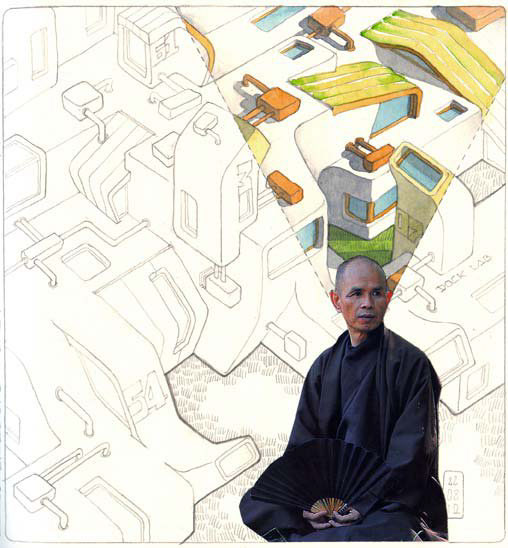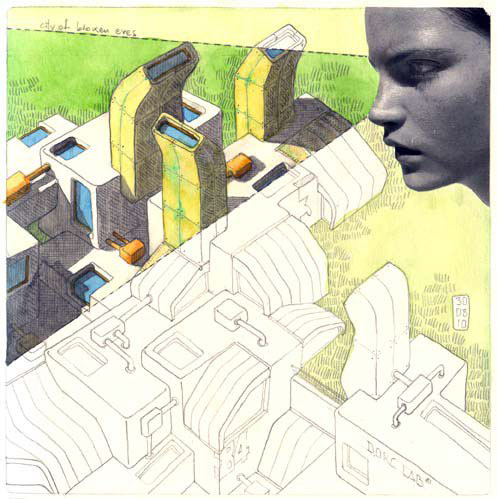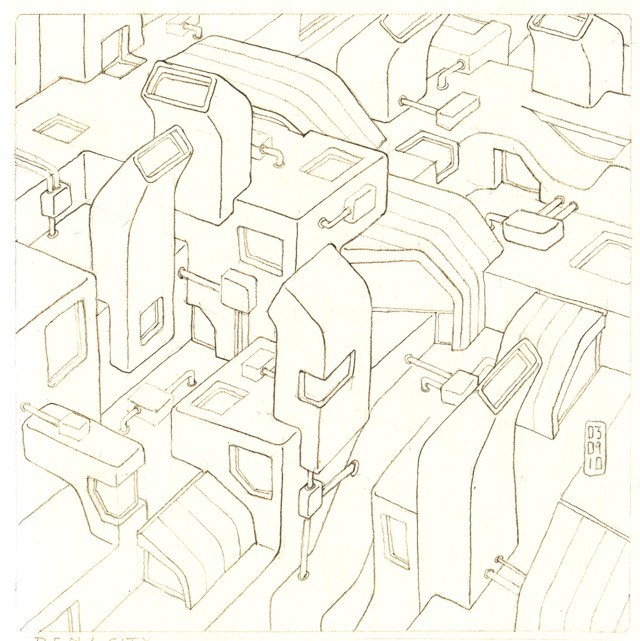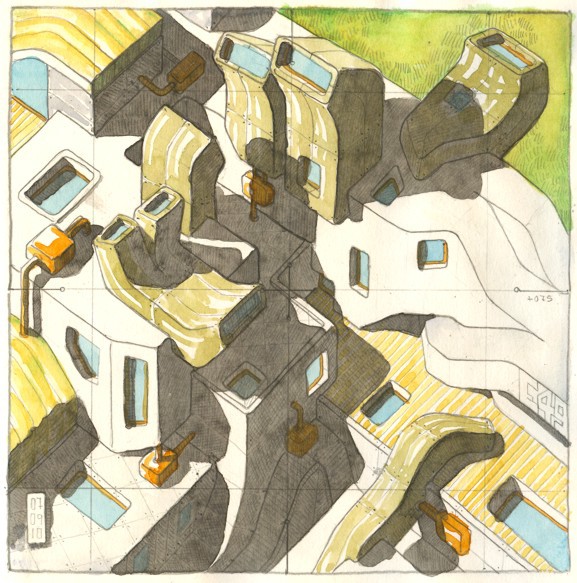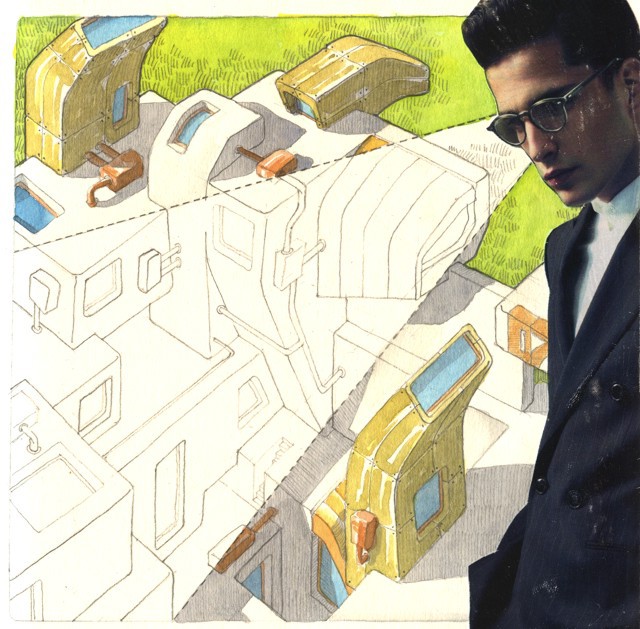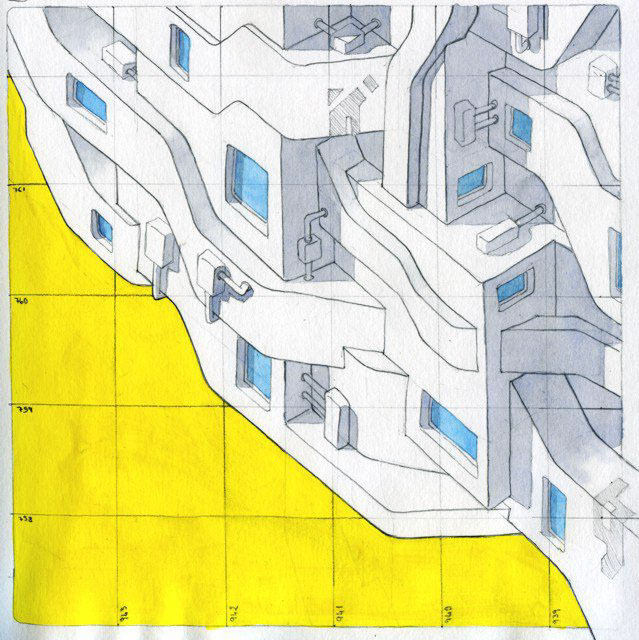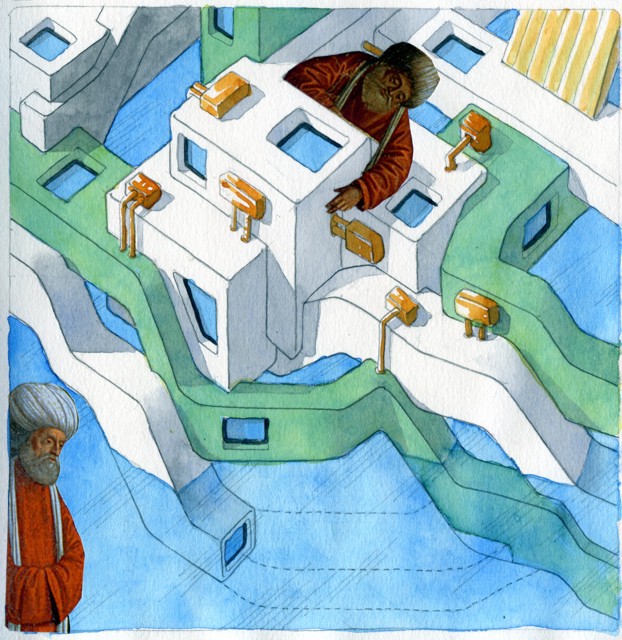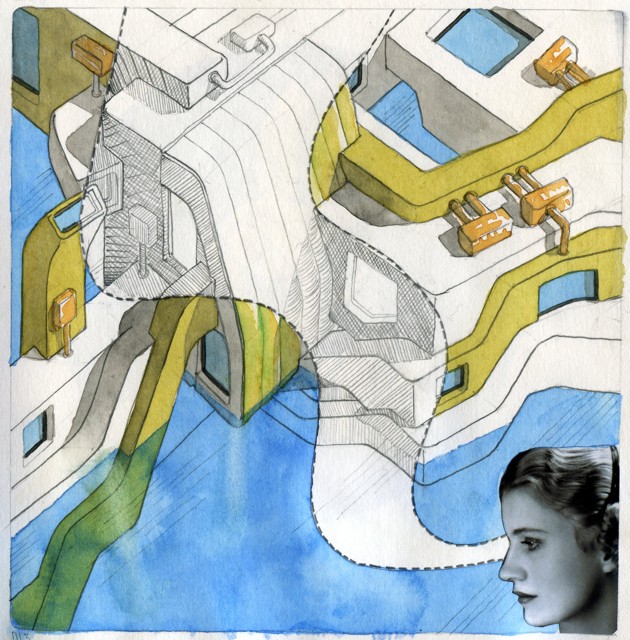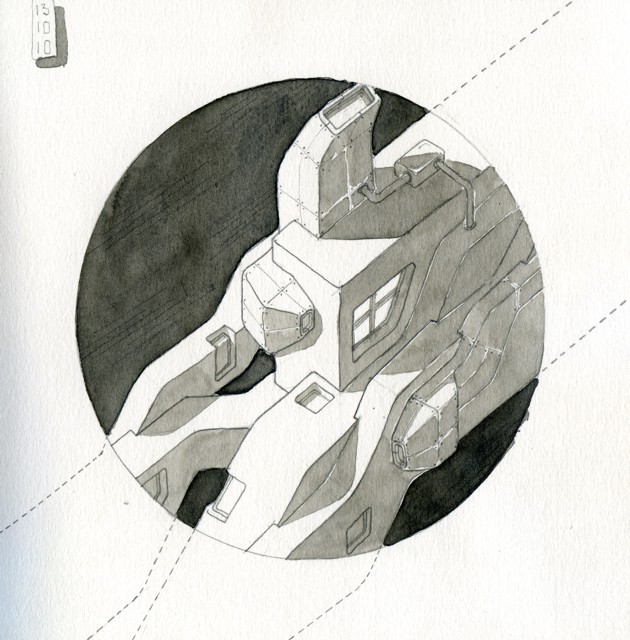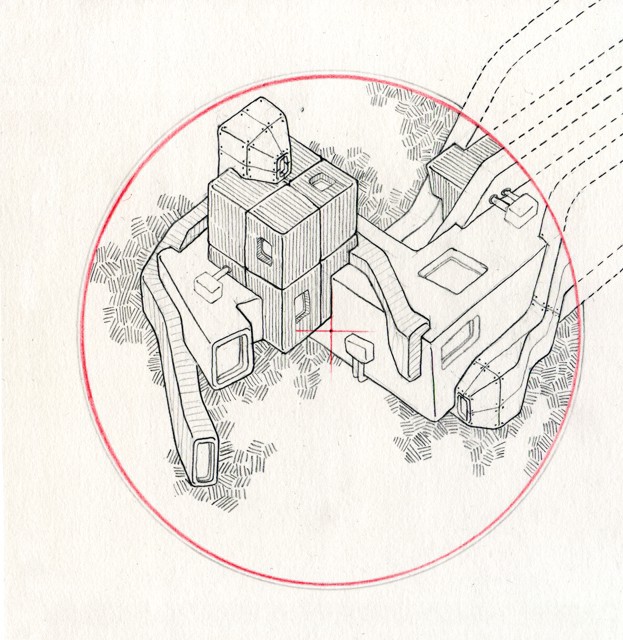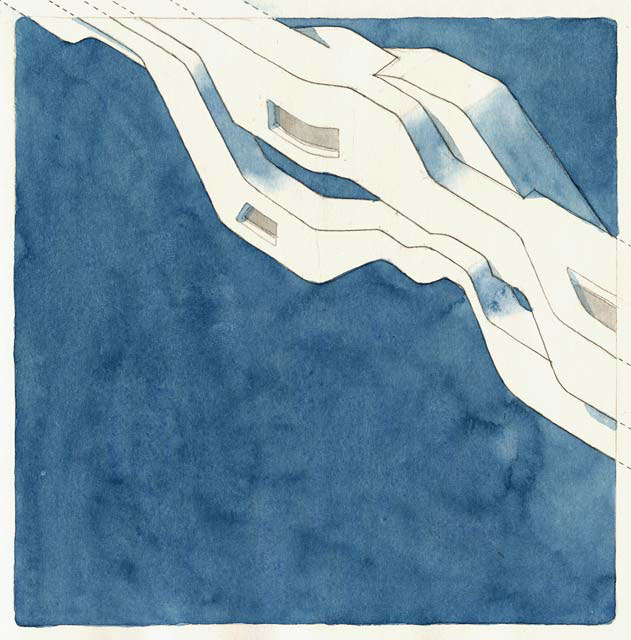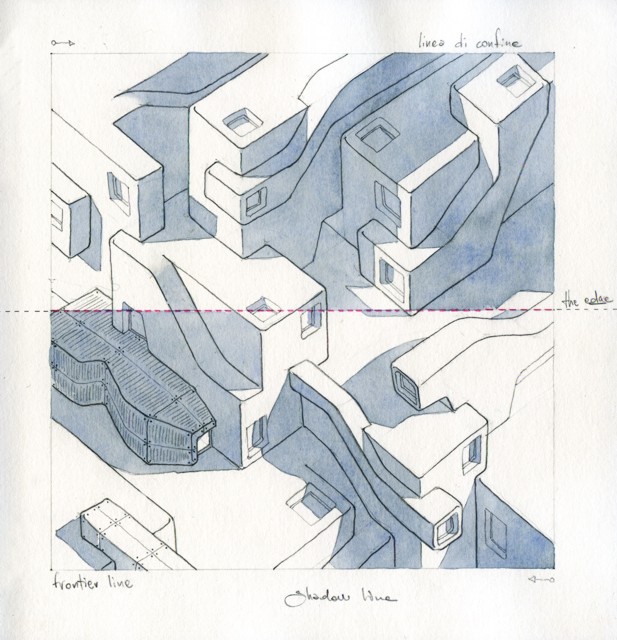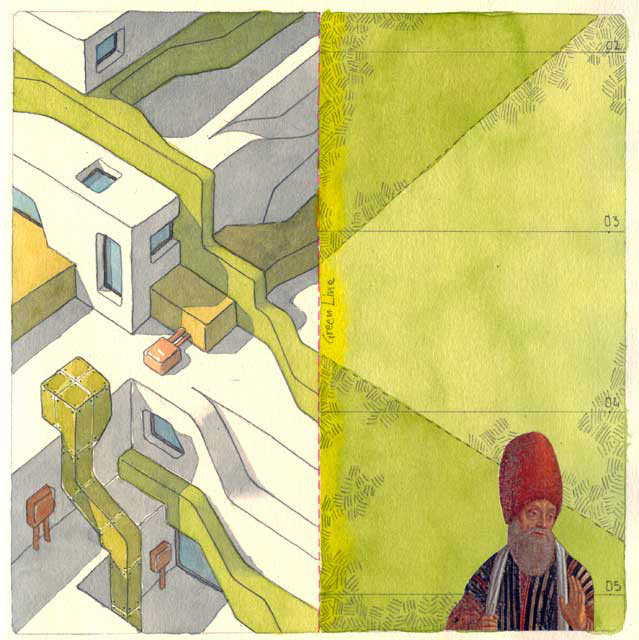MULTIVERSO
M - THEORY
M - THEORY
The possibility of working in imaginary architecture makes the profession of architect free, and frees the expression from physical laws.
The architectural design is generally intended for the construction, but not necessarily.
The architectural drawing, like any other type of drawing, can be considered as an autonomous entity and not as a representation, but it requires to have a key to be read and not only looked, especially if the design is understood as an autonomous project.
It is, in fact, only a careful reading which allows the translation from purely visual to conceptual element.
The lamellar structures constituting the new district of Kadessa, will characterize its conformation, a subtle presence that relieves the system; the weight disappears, but the volume is given, as usual, by light and shadow.
The plates are bent on themselves, twisting, closing and reopening; a flat district, characterized by a “sheet” that envelops and stretches.
The development of the project on an urban scale (master plan) will subsequently be deepened and developed.
The project is interpreted as a complex narration, with a particular attention to the relationship between physical and social forms.
We are trying to build a “New Center of Social Events”.
The use of space, the temporal movement of population, the open and built spaces, the design of soil and infrastructure, the places of sociality, of housing and labor are the main sources of inspiration for the construction of the design process.
The bases of knowledge also refer to mathematical and statistical methods, as well as to the computer experimentation methods.
A different perspective, the scientific one, allows us to approach the “Folder Town” project to the theory of “super strings” and to develop a parallel “M-Theory”.
In M-Theory it is supposed the existence of eleven dimensions: the four known ones (x, y, z and time), and seven ones more that turn on themselves and compact.
Moving on the project level, M theory gives us the following eleven dimensions.
Known dimensions: from 01 to 04
Dimension 01; X
Strings having essentially one-dimensional extension. The width is so small to be neglected.
Dimension 02; Y
Bi-dimensional strings which are two-dimensional membranes whose thickness is non-existent. Some of them close up on themselves, others remain open.
Dimension 03; Z
Folder Town development in the three dimensions, beyond the self-representation, a practical implementation of a sensory experience.
Dimension 04; TIME
Strings acquiring the fourth dimensional data, the time where you can see the repetition of the start/end cycle.
The following dimensions can be seen as the unconscious motivation that drives to the design and then to the creation of new images, new developments and then, new worlds.
Imaginary dimensions: from 05 to 08
Dimension 05; ALLOTOPIA
A world different from ours, a world in which the physical principles, but not only, are undermined, for example a world where animals can talk.
Dimension 06; UTOPIA
A model of our world as it should be, depending on the idea of the creator.
Dimension 07; UCRONIA
A dimension where past events have a completely or partially different results.
Dimension 08; METATOPIA
A dimension where the world is a future phase of this real world.
Key dimensions: from 09 to 11
Dimension 09; THE DRAWING
The drawing is considered the first key of interpretation, a relational translation between different realities, which also works as a catalyst for interactions.
Dimension 10; THE MODEL
A dimension where the relationship among the three dimensions, the known and the imaginary ones, are physically apparent.
Dimension 11; THE MOVEMENT
Unifying factor, where time becomes part of reality, subtracts the tenth dimension to the static status, and frees the creative imagination.
Every hypothetical dimension focuses on the sheet, in the model, in the video …… and then in the eye and in mind.
The architectural design is generally intended for the construction, but not necessarily.
The architectural drawing, like any other type of drawing, can be considered as an autonomous entity and not as a representation, but it requires to have a key to be read and not only looked, especially if the design is understood as an autonomous project.
It is, in fact, only a careful reading which allows the translation from purely visual to conceptual element.
The lamellar structures constituting the new district of Kadessa, will characterize its conformation, a subtle presence that relieves the system; the weight disappears, but the volume is given, as usual, by light and shadow.
The plates are bent on themselves, twisting, closing and reopening; a flat district, characterized by a “sheet” that envelops and stretches.
The development of the project on an urban scale (master plan) will subsequently be deepened and developed.
The project is interpreted as a complex narration, with a particular attention to the relationship between physical and social forms.
We are trying to build a “New Center of Social Events”.
The use of space, the temporal movement of population, the open and built spaces, the design of soil and infrastructure, the places of sociality, of housing and labor are the main sources of inspiration for the construction of the design process.
The bases of knowledge also refer to mathematical and statistical methods, as well as to the computer experimentation methods.
A different perspective, the scientific one, allows us to approach the “Folder Town” project to the theory of “super strings” and to develop a parallel “M-Theory”.
In M-Theory it is supposed the existence of eleven dimensions: the four known ones (x, y, z and time), and seven ones more that turn on themselves and compact.
Moving on the project level, M theory gives us the following eleven dimensions.
Known dimensions: from 01 to 04
Dimension 01; X
Strings having essentially one-dimensional extension. The width is so small to be neglected.
Dimension 02; Y
Bi-dimensional strings which are two-dimensional membranes whose thickness is non-existent. Some of them close up on themselves, others remain open.
Dimension 03; Z
Folder Town development in the three dimensions, beyond the self-representation, a practical implementation of a sensory experience.
Dimension 04; TIME
Strings acquiring the fourth dimensional data, the time where you can see the repetition of the start/end cycle.
The following dimensions can be seen as the unconscious motivation that drives to the design and then to the creation of new images, new developments and then, new worlds.
Imaginary dimensions: from 05 to 08
Dimension 05; ALLOTOPIA
A world different from ours, a world in which the physical principles, but not only, are undermined, for example a world where animals can talk.
Dimension 06; UTOPIA
A model of our world as it should be, depending on the idea of the creator.
Dimension 07; UCRONIA
A dimension where past events have a completely or partially different results.
Dimension 08; METATOPIA
A dimension where the world is a future phase of this real world.
Key dimensions: from 09 to 11
Dimension 09; THE DRAWING
The drawing is considered the first key of interpretation, a relational translation between different realities, which also works as a catalyst for interactions.
Dimension 10; THE MODEL
A dimension where the relationship among the three dimensions, the known and the imaginary ones, are physically apparent.
Dimension 11; THE MOVEMENT
Unifying factor, where time becomes part of reality, subtracts the tenth dimension to the static status, and frees the creative imagination.
Every hypothetical dimension focuses on the sheet, in the model, in the video …… and then in the eye and in mind.
